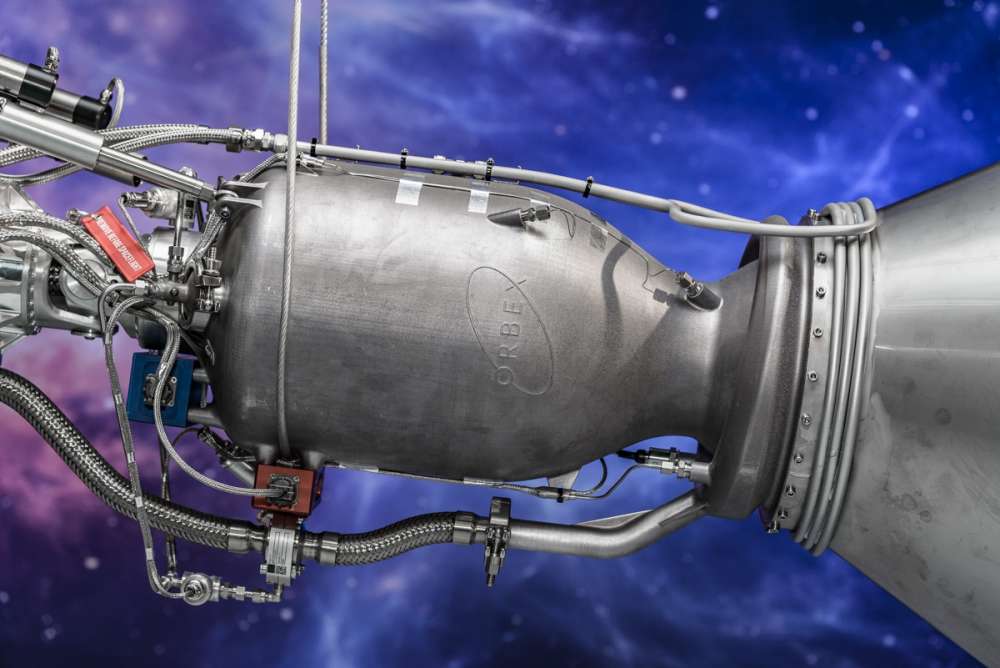UK space firm Orbex has unveiled its new rocket for the first time at the opening of its new headquarters and rocket design facility in Forres in the Scottish Highlands. The Prime rocket sports the world’s largest 3D-printed rocket engine and is also the first commercial rocket to work with bio-propane, reducing carbon emissions by 90 percent compared to traditional fuels.
Designed to deliver small satellites into Earth’s orbit, Orbex Prime is a two-stage rocket that’s claimed to be up to 30% lighter and 20% more efficient than any other vehicle in the small launcher category.
Orbex Prime is a two-stage rocket. The company presented Stage 2 while Stage 1 was still under wraps, although it is expected to be a reusable vehicle. Stage 2 is made from a specially formulated carbon fiber and aluminum composite mixture. It is printed in a single piece, so it doesn’t have any joints or welding that could weaken the rocket under extreme temperature and pressure fluctuations.
Small launchers are ideal to launch nanosatellites into Earth’s orbit. These nanosats are any satellite that weighs less than 10 kilograms (22 pounds), and more and more companies are investing in the development of smaller satellites or a constellation of satellites instead of building massive ones. This is to save on the cost of actually sending stuff to space, which remains significant.
Orbex will operate from the proposed spaceport of Sunderland in the Scottish Highlands, with Orbex Prime expected to have its maiden launch in 2021. During this launch, it will carry an experimental payload from Surrey Satellite Technology Ltd. Orbex say they are already planning several launches and have several companies booking spaces on their rockets.
Commenting on the latest raft of announcements Orbex CEO Chris Larmour said: “Orbex has been on an incredible journey, largely behind-the scenes…that is changing today, as we publicly reveal the company’s technical and commercial momentum. Not only do we have a full engineering prototype of the complete Stage 2 of the Prime rocket, but also a growing roster of customers hoping to be among the first to launch satellites from Scotland.”
The Prime vehicle will launch satellites to altitudes of up to 1,250 kilometers (776 miles) in either polar or sun-synchronous orbits (they cross any point of the Earth’s orbit at the same local mean solar time).


